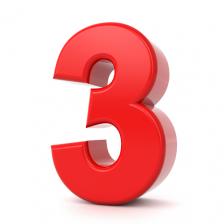What is the Rule of Three?
One is an acident. Two is a coincidence. But three is a pattern. The Public Speaker explains the magic behind the number 3.
Lisa B. Marshall

It’s no accident that the number 3 is pervasive in well-known stories: the 3 little pigs, the 3 musketeers, or the 3 wise men.
It’s also no accident that you are likely familiar with these 3-part quotes:
-
Life, Liberty, and the Pursuit of Happiness
-
Sex, Drugs, & Rock n’ Roll
-
Truth, Justice, and the American Way (of course, these are the causes for which Superman fights).
The rule of 3 is why good stories have a beginning, middle, and end, and why video games, films, and literature are often written as 3 connected works in the form of a trilogy.
My improv coach, Kristin Schier, explained the rule of 3 this way: “The first time you say something, it’s an incident. The second time you say something, it’s a coincidence. But the third time you say something, it becomes a pattern.”
In fact, she’s right, 3 is the smallest number of elements you need to create (or break) a pattern. That’s probably why it often takes children 3 days to break their bad habits. Just ask Mighty Mommy.
So the bottom line is that when giving a presentation or making any sort of speech, it’s a good idea to group your arguments into threes. This will help them to be more memorable and more effective.
Three image courtesy of Shutterstock

